Results 1,261 to 1,270 of 12095
Thread: Anandtech News
-
12-07-11, 02:50 PM #1261
Anandtech: Sony Ericsson and Motorola Detail Android 4.0 Upgrade Path
We've talked in the past about how OEMs take the Android Open Source Project (AOSP) and use it to build software tailored for devices in the context of x86 optimizations, and today two partners are sharing some more details about their specific timelines for Android 4.0 releases. Those two are Sony Ericsson and Motorola, who have outlined in their respective blog posts the path from code to getting a fully baked ROM pushed out over the air to handsets.
The two posts describe the process as we've understood it for a while now, and with Android 4.0 things don't seem any different. Google works with a specific OEM and SoC vendor around some chosen reference hardware (in this case Galaxy Nexus), and simultaneously (or close to it) releases the source code and device when things are finished. At that point, SoC vendors begin working on their own ports and build in necessary drivers or optimizations of their own.
That software package then is turned over to OEMs who add their own specific software (in the case of Motorola, for example - MotoCast, Smart Actions, and likely Blur) and make necessary tweaks to accommodate individual carrier requirements and device nuances. After the OEM finishes up its own testing, the update then passes over to carriers for their own testing, and here things have been a bit fuzzy. Motorola gives out an interesting tidbit today in their post, noting that while each carrier is different, the testing period is on the order of months:
Each carrier has different requirements for phases 2 and 3. There may be a two-month preparation cycle to enter a carrier lab cycle of one to three months.Sony Ericsson also notes that this certification and testing phase is the longest in the process:
The Certification and approval phase that is the most time consuming process when it comes to getting a new software release out on our phones. This is one of the major tasks that are legally required from us as phone manufacturer, but is a task that the custom ROM community doesn’t have to take into consideration.Motorola has noted as well that the Droid RAZR, Bionic, and Xoom are all guaranteed to get an ICS port before the second half of 2012, and the list of Motorola devices being upgraded to 4.0 will likely grow. Meanwhile Sony Ericsson noted that the entire 2011 Xperia family will receive an update to 4.0 and that dates will come later.
Source: Motorola, Sony Ericsson
More...
-
12-07-11, 06:10 PM #1262
Anandtech: Ivy Bridge Mobile Lineup Overview
It sure didn't take long. Last week, Intel's roadmaps about desktop Ivy Bridge processors were leaked and we posted our Ivy Bridge Desktop Lineup Overview on Saturday. The initial leak didn't contain any data about the mobile lineup, but the mobile roadmaps have now been leaked and it's time for us to take a look at them and provide some analysis.
Note: For Turb modes, SC = Single-Core (one thread load); DC = Dual-Core (two thread load); QC = Quad-Core (four or more thread load).Specifications of Mobile Ivy Bridge CPUs SKU i7-3920XM i7-3820QM i7-3720QM i7-3520M i5-3360M i5-3320M i7-3667U i5-3427U Core/Thread Count 4/8 4/8 4/8 2/4 2/4 2/4 2/4 2/4 Frequency (GHz) 2.9 2.7 2.6 2.9 2.8 2.6 2.0 1.8 Max SC Turbo (GHz) 3.8 3.7 3.6 3.6 3.5 3.3 3.1 2.8 Max DC Turbo (GHz) 3.7 3.6 3.5 3.4 3.3 3.1 2.9 2.6 Max QC Turbo (GHz) 3.6 3.5 3.4 N/A N/A N/A N/A N/A L3 Cache 8MB 8MB 6MB 4MB 3MB 3MB 4MB 3MB Graphics HD 4000 HD 4000 HD 4000 HD 4000 HD 4000 HD 4000 HD 4000 HD 4000 Graphics Frequency (MHz) 650 650 650 650 650 650 350 350 Max Graphics Turbo (MHz) 1300 1250 1250 1250 1200 1200 1150 1150 Memory Support DDR3-1600 and DDR3-1333 TDP 55W 45W 45W 35W 35W 35W 17W 17W VT-d X X X X X X X X TXT X X X X X X X X AES-NI X X X X X X X X SIPP X X X X X X X X vPro X X X X X X X X
The number of SKUs is the same as in the retail Sandy Bridge lineup: three quad-core models and three dual-core. There are several OEM CPUs in SNB lineup as well, and it's likely that some OEM SKUs are missing from the roadmaps. On top of that, there are two Ultra Low Voltage (ULV) models, indicated by the U at the end. When compared to SNB, there are no more 25W Low Voltage (LV) CPUs, only standard and ultra-low voltage. This isn't surprising, given that there hasn't been a mainstream product with an LV SNB CPU.
In a nutshell, mobile Ivy Bridge appears to be just like mobile Sandy Bridge but with slightly higher clocks and better graphics, just like the desktop variant. The TDPs will remain the same: 45/55W for quad-core, 17/35W for dual-core—but it's surprising that there is no mention of the 35W quad-core. It's possible that we will see one later on as the new 22nm process node matures, or the 35W quad will be an OEM-only model because those are missing from the roadmaps. Anyway, the roadmaps have nothing about a 35W quad-core, so right now it's not confirmed, although Intel previously stated that there will be one. As for the clock speeds (including Turbo speeds), they are 100-400MHz faster than in the current SNB lineup, so we won't see a huge increase in the mobile side either.
The graphics will see a much bigger update. Like in Sandy Bridge, all mobile SKUs (though Celeron and Pentium brands aren't included here) will come with the better graphics, HD 4000 in this case. This time Intel has put even more effort into the mobile graphics, and the base frequencies will be on-par (except for ULV models) with the desktop models. Also, the Turbo speeds will actually be higher than what desktop chips offer (1300MHz vs 1150MHz). The ULV chips have a substantially lower base frequency but the Turbo, which is as high as the Turbo of the desktop chips, could make up the difference.
Another important feature in Ivy Bridge graphics is the support for three simultaneous displays. This isn't as big a deal for desktops because discrete GPUs can easily be added, but laptops have limited space and discrete GPUs are mainly found in bigger laptops. In the last few years, however, laptops have taken a lot of market share from desktops and using a laptop as a desktop replacement is becoming increasingly common. The Sandy Bridge IGP supports only two displays, which basically means one external display plus the internal LCD of the laptop. For some users, this has been a limiting factor in running a laptop as a desktop replacement. Especially now that we are entering the Ultrabook era, IGPs need to have proper multi-display support as well. While the IGP won't be the fastest GPU on the planet, it will still be more than capable of running basic tasks. My personal usage is fairly light (mainly web browsing, IMing, email and writing) and an IGP would be sufficient, but I prefer at least two 1080p monitors because I tend to have multiple windows open at the same time side by side. This is where the SNB IGP wouldn't cut it, but IVB IGP will.
The Chipsets
We have known the features of desktop chipsets for quite a while (since May, to be exact) but the mobile chipsets have remained as a mystery until today. The basic features are the same: USB 3.0 will be included and we finally get the first mobile chipset with Smart Response Technology (SRT). There will be a total of six chipsets: four consumer and two business models. Let's look at the specifications.
On top of the features listed in the table above, all chipsets support Anti-Theft Technology (ATT), Intel Wireless Display (WiDi), and up to three simultaneous displays. ATT allows your computer to be remotely locked in case it has been lost or stolen, while Intel Wireless Display enables wireless streaming to an external display (e.g. an HDTV) with a third party adapter. Note that WiDi also requires an Intel wireless adapter.Specifications of Mobile Intel 7-Series Chipsets Model HM75 HM76 HM77 UM77 QM77 QS77 USB Ports (USB 3.0) 12 (0) 12 (4) 14 (4) 10 (4) 14 (4) 14 (4) PCIe 2.0 Lanes 8 8 8 4 8 8 SATA Ports (6Gb/s) 6 (2) 6 (2) 6 (2) 4 (1) 6 (2) 6 (2) VGA X X X X X RAID X X X X Smart Response Technology X X X X Active Management Technology X X Small Business Advantage X X X X
The lineup is pretty straightforward. HM75 is the low-end model and is the only chipset that lacks USB 3.0 support, along with some of the software features like SRT and RAID. HM76 brings USB 3.0 supports but lacks the same software features as HM75.
HM77 is the chipset to look for in the higher-end laptops. It offers two extra USB 2.0 ports compared to HM76, but the more important part is its software support. RAID support in a laptop isn't that big of a deal because few laptops have space for two 2.5" drives, and a single SSD would easily outperform two 2.5" HDs in RAID 0. Smart Response Technology, Intel's own SSD caching system, is what you should be looking at. Z68 was the first chipset that supported SRT, but a mobile version was never released. There have been 3rd party solutions, such as OCZ Synapse, but they haven't received much attraction. Having a 3rd party software playing with low-level file access also has its risks, so I think OEMs will be more comfortable adopting Intel's caching system since it's built into the chipset, and if the laptop already has the necessary chipset there's no additional software cost.
The last entry of the consumer chipsets is UM77. It's a low power chipset and will mainly be aimed at ultrabooks. Its feature list is a bit more crippled but the crucial features, USB 3.0 and SATA 6Gb/s, are still there. The number of PCIe lanes is cut in half but that shouldn't be an issue because there are still 16 PCIe 3.0 lanes coming from the CPU, and we have yet to see an ultrabook with discrete graphics. Moreover, ultrabooks rarely have many PCIe devices and the on-die USB 3.0 support reduces the need for additional devices even more.
There are two chipsets remaining, QM77 and QS77. The Q designation is for business models. Specification wise, they are equal but QS77 comes in a smaller form factor, ideal for business orientated ultrabooks and other small form factor computers. The only advantage these chipsets have over HM77 is Intel Active Management Technology, which allows administrators to remotely monitor, update and repair computers over the network, even if the PC is powered off. (There's a specific circuit for this, hence the computer's regular network card doesn't have to be on). Small Business Advantage (SBA) is another business related feature and it offers for example hardware level anti-virus monitoring, blockage of unwanted USB devices, and data backup. Some of these tasks, such as the back up, can be run even when the actual computer has been turned off. HM77 and UM77 support SBA as well, although it's most useful for businesses.
Wrap-Up
The only surprise is the TDPs. Ivy Bridge is supposed to be more power efficient but right now, the only CPUs that have seen a cut in TDPs are the standard voltage desktop chips. The lack of 35W quad-core is particularly disappointing. 35W would make quad-core possible in smaller 13-14" laptops, such as the 13" MacBook Pro. I think quite a few people have been waiting for less bulky quad-core laptops as a 13" laptop can still be a good desktop replacement if your usage is only CPU intensive (unless a decent discrete GPU can be fit in 13" chassis along with 35W CPU). Hopefully the 35W QC will be at least an OEM-only model, or come a few months later. Haswell would mean another year or so of waiting.
As a whole, Ivy Bridge will be an average update for laptops. The CPU performance won't increase substantially (maybe around 15% or so) but the graphics will see a healthy boost. The new chipsets will also provide some anticipated features, which should make IVB a worthwhile upgrade if you have a pre Sandy Bridge laptop.
More...
-
12-07-11, 09:30 PM #1263
Anandtech: Lian Li's PC-A05FN: Alternative Thinking at a $99 Price Point
If you're willing to shell out the money for them, there are a lot of interesting alternative enclosure designs on the market. Companies like SilverStone, Thermaltake, and Lian Li are happy to sell you more experimental and exotic cases once you get past $150 or so, but what if you want something a little spicier without breaking the bank? At $99 Lian Li has you covered with the new PC-A05FN. There are a lot of good (or at least interesting) ideas at work in the PC-A05FN, but how well do they pan out?
More...
-
12-07-11, 11:40 PM #1264
Anandtech: Xbox 360 Companion for Windows Phone, Xbox Live for iOS Apps Released
The Xbox team has been rather busy lately. On Tuesday, the team delivered the most sweeping facelift of the Xbox 360 dashboard since NXE, and today released an Xbox Companion app for Windows Phone 7 and My Xbox Live for iOS. We've had a little bit of time to troll around inside the two and thought it worthwhile to go over the very different features the two offer in conjunction with an Xbox 360.
To start, the behavior of Xbox Companion for WP7 is very much analogous to Apple's Remote for iOS. Xbox Companion offers basic control over the dashboard and inside applications (including directional controls and a/b/x/y buttons) in addition to the ability to both control media playback, launch games, view friend activity, and search using Bing. The Xbox 360 under control has to have Companion enabled under Console Settings, but after that all that's required is a Live ID user and password on the app. Control works over cellular data or WiFi, though WiFi of course affords much lower input latency and better experience.
Gallery: Xbox Companion for WP7 App Gallery





Again, Xbox Companion really acts in practice like a remote for an attached 360, and does a pretty good job replacing a the IR Xbox 360 media center remote if you have a WP7 smartphone handy. Xbox Connector finally gets close to the kind of integration that we've been waiting for between WP7 and the 360, and using it as a remote is fluid if you're using it over WiFi with good connectivity.
My Xbox Live for iOS eschews the control and remote functions of its WP7 counterpart, and instead gives you control over Xbox Live messaging, friends, and an achievements browser. It's slightly surreal to see and use a Metro-style UI on iOS, but the interface is extremely fluid.
There isn't nearly as much function here as Xbox Compaion, as unsurprisingly Microsoft wants to keep some of that control exclusive to the WP7 counterpart. That said, sending text-based messages over Xbox Live is way easier on the iOS app than it is on the 360 unless you have a chatpad or use voice.
Gallery: My Xbox Live iOS App Gallery
Source: WP7 Marketplace, Apple App Store, Major Nelson Blog (1), (2)
More...
-
12-08-11, 07:31 AM #1265
Anandtech: Quick update: more Interlagos testing
As promised in our last Opteron "Interlagos" review, we have been taking the time to deepen our understanding of AMD's newest Interlagos server platform and the "Bulldozer" architecture. Server reviewing remains a complex undertaking: some of the benchmarks take hours to setup and run and power management policies, I/O subsystems and configuration settings can completely alter the outcome of a benchmark. That sounds very obvious right? It is not in practice. Let me give you an example how subtle server benchmarking can be. One of the benchmark missing in the original review was the MS SQL server benchmark, and for a reason. We did some extensive scaling benchmarks and our gutfeeling told us that some of the results were a bit off the mark. So we kept the benchmark out of the original review until we pinpointed the problem.
Just a few days ago, we found out that a tiny bit of time-outs (1%, caused mostly by a data provider time out setting) can boost the results by about 20% erroneously as the actual workload is decreased. So our MS SQL server benchmark was not as accurate as we thought it was. Luckily we have solved all problems, and the benchmark is now more accurate than ever. Expect the MS SQL server benchmarks on different server platforms and an in depth analysis in a new article.
While solving the MS SQL Server benchmark issues required a lot of testing, analysis and debate with Dieter, the lead developer of our stresstest tool vApus, we missed a more obvious tweak that could have improved our blender benchmarking. Luckily, we still have a community that is willing to give us valuable feedback. Greg Wereszko point out that our Blender benchmark cuts the render job up in only 64 tiles (X=8, Y=8). The result is that near the end of the test several cores are inactive, especially on the Interlagos Opteron (32 cores/threads).
So we increased the number of tiles beyond 8x8, to check if this improves performance on our 32 and 24 thread machines. And it did.
Instead of trailing behind the Opteron 6174, the Opteron "Interlagos" 6276 manages to perform a tiny bit better than its older sibling when we use 256 (16x16) tiles. The Opteron 6276 improves performance by 24%, the Xeon X5650 and Opteron 6174 by 19%.
Using more tiles, all CPUs are able to show their top performance. It also shows the rather "fragile performance profile" of the new Opteron. Many users are going to use standard settings and will never bother with this kind of tuning. As a result they are not going to use the full potential of the new Opteron. The Xeon's higher single threaded performance makes it less vulnerable to less optimal software settings.
At the other side of the coin, once well tuned offers the Opteron 62xx an interesting performance per dollar ratio and this "fragile performance profile" may become very robust in FP intensive applications once the use of AVX gets widespread.
We are taking quite a bit of time to make sure that the next server article can give much more in depth information. But rest assured that we did not give up: we will update our server benchmarking...when it is finished.
More...
-
12-08-11, 02:10 PM #1266
Anandtech: AMD Releases New Llano Mobile CPUs
AMD is refreshing its mobile CPU lineup with seven new A4, A6, and A8 Llano processors for socket FS1. With one exception, these dual- and quad-core processors give a mild speed bump to existing processors using the same GPUs, L2 cache amount, TDP, and core stepping - see the table below for specifications.
The refresh features four processors with the -M suffix, denoting slightly lower clock speeds and TDPs than the -MX processors (in this case, 35W). Three of these, the A4-3320M, the A6-3420M, and the A8-3520M, are 100MHz bumps in base and turbo CPU clock speed over their predecessors, the A4-3300M, the A6-3400M, and the A8-3500M (GPU clocks and core counts are unchanged). The -MX processors are the same story - newer versions of the A4-3310MX, A6-3410MX, and A8-3530MX with 100MHz more clock speed with the same GPUs and 45W TDPs.AMD Llano mobile CPU refresh Name Cores CPU Clock L2 Cache GPU GPU Cores GPU Clock TDP A4-3305M 2 1.9GHz (2.5GHz turbo) 1MB HD 6480G 160 593MHz 35W A4-3320M 2 2GHz (2.6GHz turbo) 2MB HD 6480G 240 444MHz 35W A4-3330MX 2 2.2GHz (2.6GHz turbo) 2MB HD 6480G 240 444MHz 45W A6-3420M 4 1.5GHz (2.4GHz turbo) 4MB HD 6520G 320 400MHz 35W A6-3430MX 4 1.7GHz (2.4GHz turbo) 4MB HD 6520G 320 400MHz 45W A8-3520M 4 1.6GHz (2.5GHz turbo) 4MB HD 6620G 400 444MHz 35W A8-3550MX 4 2GHz (2.7GHz turbo) 4MB HD 6620G 400 444MHz 45W
The outlier is the A4-3305M, a new low-end processor with the same CPU clocks as the A4-3300M but with half the L2 cache and 33% fewer GPU cores, though the GPU clock has been increased to compensate. In spite of these changes, the GPU is still called the HD 6480G.
Expect to see these APUs trickle into laptops in the coming months.
Source: CPU World
More...
-
12-08-11, 06:10 PM #1267
Anandtech: Zalman to Enter Graphics Card Market With AMD GPUs
Overclockers.ua has leaked slides which strongly suggest that Zalman will soon be entering the graphics card market. Zalman is mostly known for their coolers and their CPU coolers are one of the most popular ones at NewEgg; they also sell power supplies and SSDs. At least initially, Zalman will be AMD's partner. The slides have only AMD 6870, 6850 and 6770 listed, but it's possible that we will see more models when this becomes official. Here is a table of the GPUs.
The cards are all running at stock frequencies. Zalman is well known for their cooling solutions, and we expected their GPUs to have a beefier cooler and possibly be overclocked as well. To be honest, the cards look vapid. The cooler design is very reference and there are plenty of cards with similar designs, for example the HIS 6850 Fan. That is not to say the cooling system is bad, it's just nothing special.Specifications of Zalman's Graphics Card Lineup Model HD6870-H HD6850-H HD6770-H GPU AMD 6870 AMD 6850 AMD 6770 Stream Processors 1120 960 800 Texture Units 56 48 40 ROPs 32 32 16 Core Clock 900MHz 775MHz 850MHz Effective Memory Clock 4200MHz 4000MHz 4800MHz Memory (GDDR5) 1GB 1GB 1GB Memory Bus Width 256-bit 256-bit 128-bit Price $190 $168 $124
There are already plenty of AMD board partners so succeeding requires you to be different, usually either in price or cooling performance. Given the prices, Zalman isn't competing in that category, which leaves them with cooling performance. Zalman definitely has the experience in cooling systems, including GPU coolers, and hopefully we will see some products that are more innovative from them in the future.
Shipments are set to start next Tuesday, December 13th.
Source: Overclockers.ua via TechPowerUp
More...
-
12-08-11, 11:10 PM #1268
Anandtech: Holiday 2011 Mainstream High-End Buyer's Guide
After covering the budget and midrange sectors of the DIY PC market, as well as pre-built desktops and laptops, today we have a guide outlining mainstream high-end builds. Saying the computers outlined in this guide are capable is an understatement—these are seriously powerful (and spendy!) systems. These rigs check out around $2000, at the top of the mainstream market. Each of them will be able to serve their owners well for years to come.
We start with a fancy mini-ITX HTPC that has lots of room for a huge media library and is capable of encoding videos quickly, followed by an impressive gaming box, and finish with a powerful workstation featuring Intel's latest CPU architecture, Sandy Bridge-E.
More...
-
12-09-11, 11:10 AM #1269
Anandtech: ASRock X79 Extreme4-M and X79 Extreme4 Review – Sandy Bridge-E meets mATX
In our series of X79 reviews, the next boards to face scrutiny are a pair of ASRock boards – the X79 Extreme4-M, one of the first mATX solutions to X79, and the X79 Extreme4, a full size ATX model. The main interesting point to consider starts with whether the power consumption and heat generation are applicable to the Sandy Bridge-E platform. With the socket and quad channel memory taking up serious PCB real estate, it is interesting to see how ASRock have tackled heat dissipation issues. We also compare the Extreme4-M to the Extreme4, its bigger brother. Both boards offer amazing value in X79 land, coming in at a recommended retail of $224.99 and $234.99 respectively. Read on for the full review!
More...
-
12-09-11, 01:10 PM #1270
Anandtech: webOS Goes Open Source
HP has finally decided what it's going to do with webOS: the software will be made available under an open source license. This likely signals the ultimate end of webOS as a significant commercial venture for HP, although we pretty much got the hint earlier in the year. HP is soliciting developer input to help define the charter of the project here.
I had personally given up on webOS a while ago. The platform really had a lot of potential but HP was both the right and wrong company to take it to the next level. The best we can hope for is that some of the innovations in webOS will get incorporated into other competing OSes and in turn, make them better. I'd like to see webOS stand on its own as another platform, but I do believe the time for that has passed.
More...
Thread Information
Users Browsing this Thread
There are currently 72 users browsing this thread. (0 members and 72 guests)






 Quote
Quote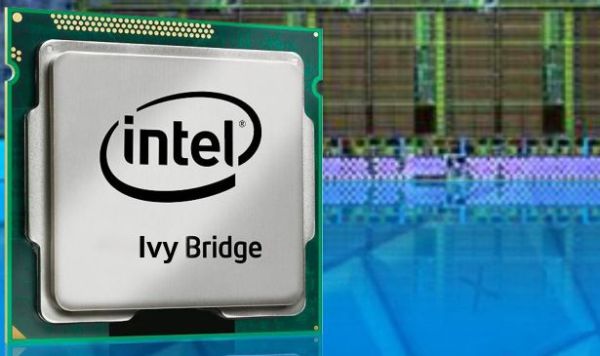

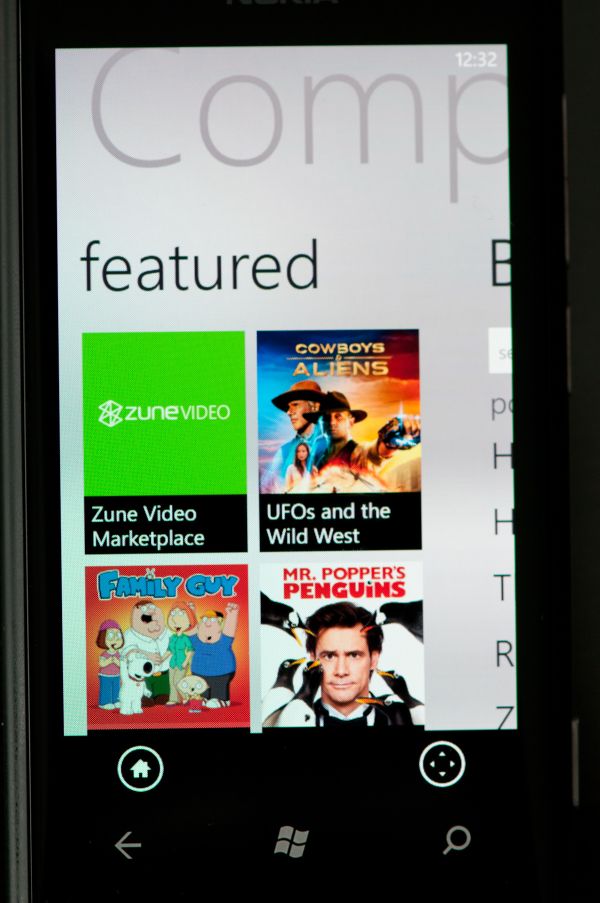







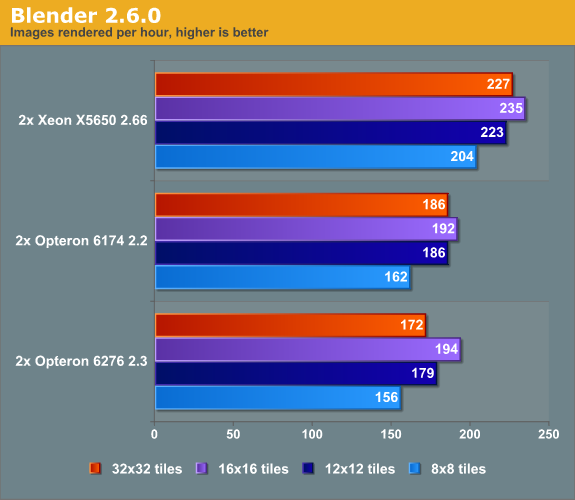



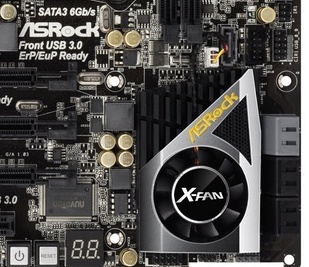
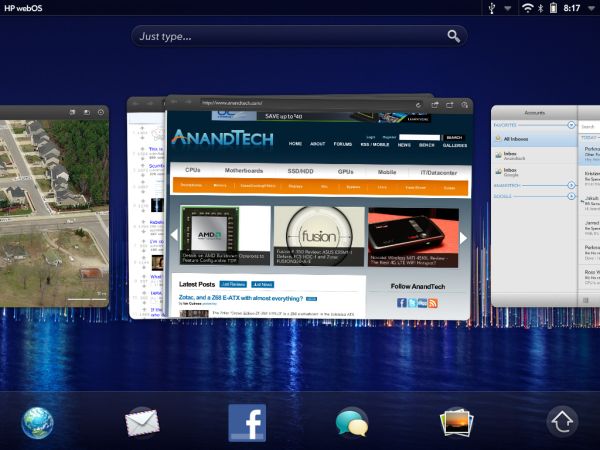
















Bookmarks